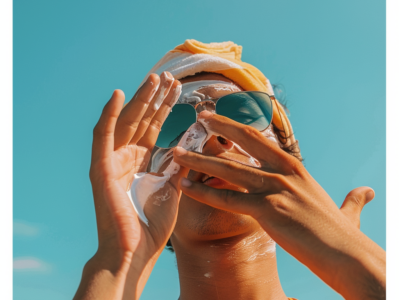Sun Safety Tips for Volunteers: Staying Safe During Outdoor Charitable Activities
Volunteering for outdoor charitable activities is a rewarding way to give back to your community. Whether you’re helping to build homes, clean up parks, or participate in fundraising walks, spending time outdoors can expose you to the sun’s harmful rays. It’s important to prioritize sun safety to protect your health while you contribute to worthy causes. Here are some comprehensive sun safety tips to ensure you stay safe and protected while volunteering outdoors.
1. Understand the Risks of Sun Exposure
Before diving into specific tips, it’s crucial to understand why sun protection is necessary. The sun emits ultraviolet (UV) rays, which can lead to skin damage, premature aging, and skin cancer. Prolonged exposure without proper protection increases the risk of these adverse effects. Volunteers, often working under the sun for extended periods, need to be particularly vigilant about sun safety.
2. Wear Protective Clothing
One of the most effective ways to protect your skin from UV rays is by wearing appropriate clothing. Consider the following options:
- Long-Sleeved Shirts and Pants: Choose lightweight, long-sleeved shirts and pants to cover as much skin as possible. Fabrics with a tight weave offer better protection.
- Hats: A wide-brimmed hat can shield your face, neck, and ears from the sun. Baseball caps are less effective as they leave the neck and ears exposed.
- Sunglasses: Protect your eyes with sunglasses that block 100% of UV rays. This can prevent cataracts and other eye damage caused by sun exposure.
3. Apply Sunscreen Regularly
Sunscreen is a vital part of any sun safety routine. Here are some guidelines for effective use:
- SPF 30 or Higher: Use a broad-spectrum sunscreen with an SPF of at least 30, which blocks 97% of UVB rays.
- Reapply Often: Apply sunscreen 15 minutes before going outdoors and reapply every two hours, or more frequently if you’re sweating or swimming.
- Cover All Exposed Areas: Don’t forget to apply sunscreen to often-missed spots like the back of the neck, ears, and the tops of your feet.
4. Seek Shade
Whenever possible, take breaks in shaded areas. This is particularly important during peak sun intensity hours, typically between 10 a.m. and 4 p.m. Set up rest stations under trees, tents, or portable canopies to provide volunteers with a reprieve from direct sunlight.
5. Stay Hydrated
Working in the sun can lead to dehydration, which is exacerbated by sweating. Dehydration not only affects your performance but can also increase your susceptibility to heat-related illnesses. Keep these tips in mind:
- Drink Plenty of Water: Aim to drink at least 8 ounces of water every hour, more if you’re sweating heavily.
- Avoid Alcohol and Caffeine: These can increase dehydration. Stick to water or sports drinks that replenish electrolytes.
- Eat Water-Rich Foods: Fruits and vegetables like watermelon, cucumbers, and oranges can help keep you hydrated.
6. Recognize the Signs of Heat-Related Illnesses
Heat exhaustion and heatstroke are serious conditions that can result from prolonged exposure to high temperatures. Be aware of the symptoms and act quickly if you or another volunteer shows signs of heat-related illness:
- Heat Exhaustion: Symptoms include heavy sweating, weakness, dizziness, nausea, and headache. Move to a cooler place, drink water, and use cool, wet cloths to lower body temperature.
- Heatstroke: This is a medical emergency. Symptoms include high body temperature, confusion, rapid pulse, and loss of consciousness. Call emergency services immediately and try to cool the person down with ice packs or cold water until help arrives.
7. Plan Activities Wisely
When organizing volunteer activities, consider the time of day and the environment. Schedule demanding tasks for early morning or late afternoon when the sun is less intense. Ensure there’s a plan for regular breaks and provide access to shaded areas and hydration stations.
8. Educate Volunteers
Education is a powerful tool in promoting sun safety. Ensure all volunteers are aware of the risks and the measures they can take to protect themselves. Distribute informational materials, hold briefings before activities, and encourage a culture of sun safety.
9. Use UV-Blocking Accessories
In addition to sunscreen and protective clothing, consider using UV-blocking accessories. These include:
- UV-Blocking Umbrellas: Portable umbrellas can provide immediate shade.
- Cooling Towels: These can be soaked in water and placed around the neck to help stay cool.
- UV Wristbands: These change color to indicate UV exposure levels, reminding volunteers to reapply sunscreen or seek shade.
10. Lead by Example
If you’re coordinating the volunteer activity, lead by example. Show your commitment to sun safety by wearing protective clothing, applying sunscreen, and taking regular breaks in the shade. Your actions will encourage others to do the same.
Conclusion
Volunteering outdoors is a fulfilling experience that comes with the responsibility of protecting yourself from the sun’s harmful effects. By following these sun safety tips, you can ensure a safer, more enjoyable experience for yourself and your fellow volunteers. Remember, sun safety is not just about preventing immediate discomfort; it’s about long-term health and well-being. Stay safe, stay protected, and continue making a positive impact in your community.







